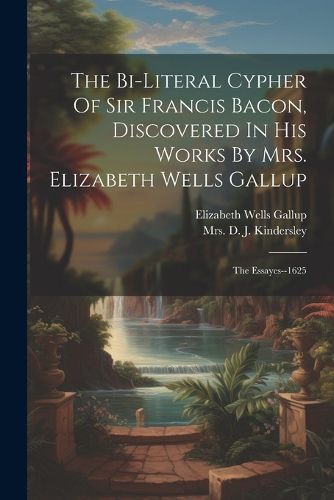Readings Newsletter
Become a Readings Member to make your shopping experience even easier.
Sign in or sign up for free!
You’re not far away from qualifying for FREE standard shipping within Australia
You’ve qualified for FREE standard shipping within Australia
The cart is loading…






This book presents a groundbreaking theory about the works of Sir Francis Bacon, the famous philosopher and statesman of the Elizabethan era. The author argues that Bacon used a secret code, known as the biliteral cipher, to encode hidden messages within his essays and other writings. With many examples and analyses, Gallup makes a compelling case for her interpretation of Bacon's work and sheds new light on one of the most enigmatic figures of English literature.
This work has been selected by scholars as being culturally important, and is part of the knowledge base of civilization as we know it.
This work is in the "public domain in the United States of America, and possibly other nations. Within the United States, you may freely copy and distribute this work, as no entity (individual or corporate) has a copyright on the body of the work.
Scholars believe, and we concur, that this work is important enough to be preserved, reproduced, and made generally available to the public. We appreciate your support of the preservation process, and thank you for being an important part of keeping this knowledge alive and relevant.
$9.00 standard shipping within Australia
FREE standard shipping within Australia for orders over $100.00
Express & International shipping calculated at checkout
This book presents a groundbreaking theory about the works of Sir Francis Bacon, the famous philosopher and statesman of the Elizabethan era. The author argues that Bacon used a secret code, known as the biliteral cipher, to encode hidden messages within his essays and other writings. With many examples and analyses, Gallup makes a compelling case for her interpretation of Bacon's work and sheds new light on one of the most enigmatic figures of English literature.
This work has been selected by scholars as being culturally important, and is part of the knowledge base of civilization as we know it.
This work is in the "public domain in the United States of America, and possibly other nations. Within the United States, you may freely copy and distribute this work, as no entity (individual or corporate) has a copyright on the body of the work.
Scholars believe, and we concur, that this work is important enough to be preserved, reproduced, and made generally available to the public. We appreciate your support of the preservation process, and thank you for being an important part of keeping this knowledge alive and relevant.